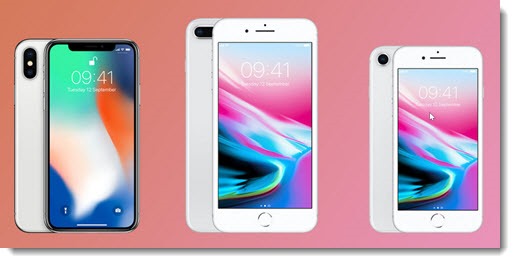
It’s new phone season! Here’s the view from 10,000 feet of the premium phones from Apple, Samsung, and Google.
The manufacturers spent the last few years making our phones bigger and improving the cameras. They’re about as big now as anyone reasonably wants, and the cameras of the best phones are arguably already better than most people need for casual snapshots. So this year the focus is on improving the screens, reducing the size of bezels, and adding features that might help keep customers loyal to the brand.
Let’s start with Apple, which sets the pace for the industry as always. Its new phones are the iPhone 8 and 8 Plus (available next week) and the iPhone X, available but in short supply in late October and sporting a new design and breathtaking price tag.
Next article: Samsung Galaxy S8, Galaxy Note 8, and upcoming Google Pixel 2 phones
Apple iPhone X
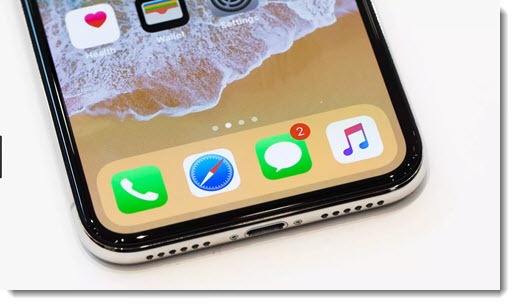
Apple’s new flagship phone, the iPhone X (pronounced “ten”), has a gorgeous OLED screen, ultra-powerful processor, wireless charging, and improved front-facing camera, all packed into a surprisingly small case. (Take a look at the top picture – the screen is the size of the iPhone 8 Plus, the body not much bigger than the iPhone 8.)
The iPhone X is the first phone with a starting price of a thousand dollars. At that price it doesn’t have quite enough storage, so the model you want is actually $1,149. Although that’s a daunting price, a large number of Apple buyers are not price sensitive and will buy the latest and greatest without hesitation. Apple is reportedly having a difficult time getting sufficient quantities of the OLED screen for the iPhone X, guaranteeing that it will be sold out until well into 2018. That will create the impression of huge demand regardless of the actual numbers sold – and scarcity will only make it seem more appealing, of course. In the end, as always, Apple will undoubtedly sell eleventy-bajillion iPhone Xs in the next year.
Apple knew its new flagship phone had to have a bezel-less design or risk looking dated and second-rate. It was widely reported that Apple wanted to put the home button under the glass on the screen so it could be accessed with some special hard push or the like. Despite valiant efforts by scores of engineers, it was unable to figure out how to do that, so Apple made a relatively late decision to eliminate the home button completely and rely exclusively on facial recognition to unlock the phone. That’s right, no Touch ID fingerprint button to be found.
There are a few consequences of that fateful decision. It will be fascinating to read reviews when the iPhone X is released in late October, and then hear the feedback from users after a month or two.
• Facial recognition has been tried before on computers and on phones. Microsoft has most recently made some progress with the Windows Hello feature in Windows 10. But no one has gotten it quite right – it responds too slowly, or it requires your head to be positioned too precisely to be convenient to use, or it can be fooled by photographs and masks. Perhaps Apple has perfected it. That’s Apple’s strength, after all; it polishes up technology that others developed but were under-utilizing. But it might take time for Apple to get it right, making the second generation of the iPhone X a better bet than this upcoming first release.
• The home button is at the heart of Apple’s well-understood controls for the iPhone. Removing it requires the creation of an entirely new set of controls for closing and switching apps, for bringing the control center onscreen, and more. I don’t know if you know this but there are a few people, a handful, who don’t like change. Each of you will make your own decision about whether you’re ready to learn new ways to use the iPhone X. Apple’s user interface is now thoroughly fragmented – two different interfaces for different iPhone models, plus several different sets of gestures for multi-tasking and split-screen views on different sizes and models of iPad.

• Then there’s the notch. The facial recognition system requires an array of sensors in a black bar at the top of the screen. The ears on either side of the notch are going to be used for the time and the icons for signal strength, wi-fi, and battery, and some gestures will start from each ear. Each app will have to decide what to do with the screen space covered by the notch. Web pages and videos might have a white or black bar to avoid cutting off part of the page when the phone is in landscape mode, which kind of misses the point of the “bezel-less” display. Some people will find that the notch is distracting, others will quickly ignore it.
Interesting technical side note: Apple’s Face ID sensors are an obvious evolution of the technology first brought on the market in 2009 by Microsoft for the Kinect, the failed Xbox living room add-on.
I’ll leave it to you to go look up articles about the new features for the iPhone X. Gosh, the excitement! You can adjust the lighting on selfies, you can use augmented reality (which will be important someday but, well, not today, if Apple’s demos are any indication), and, and, and . . . I can barely make myself type the words. Animated emojis. Honest, an Apple executive stood onstage at the presentation of the new phones and proudly showed off an animated poop emoji that can mimic your facial expressions. The mind, it is boggled. I feel stupider just thinking about it.
The iPhone X summary: It’s expensive. It will be hard to get your hands on one through the end of the year and into 2018. You might want to wait for reviews to learn whether Apple has made facial recognition work effectively, to make it worth learning new controls. But the bottom line is, you might want one because it is going to be a great phone by almost any measure and there is still some undeniable cachet from having Apple’s latest and greatest.
I can’t leave, though, without mentioning a pet peeve. Apple boasted about the bezel-less display on the iPhone X. Every article (and there are literally thousands) has described the bezel-less display in glowing terms. I know Apple casts a strong distortion field but for god’s sake, people, look at the pictures. There’s a bezel around the entire screen. Apple eliminated most of the huge chin on the bottom of the traditional iPhones that has been required for the home button, and it reduced the size of the bezel on the top by turning it into a notch. Great. Full marks for style. But Samsung has shown us what a truly bezel-less phone looks like with the new Galaxy S8 (in the picture below). The iPhone X looks lovely and the full screen is an improvement over the dated traditional huge iPhone chin and forehead, but it’s not bezel-less.
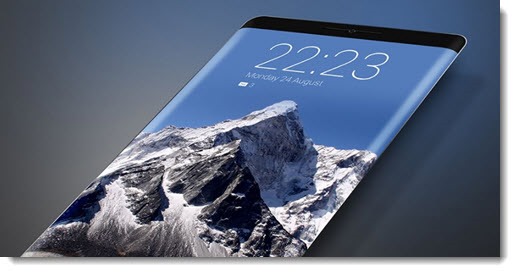
iPhone 8 and 8 Plus
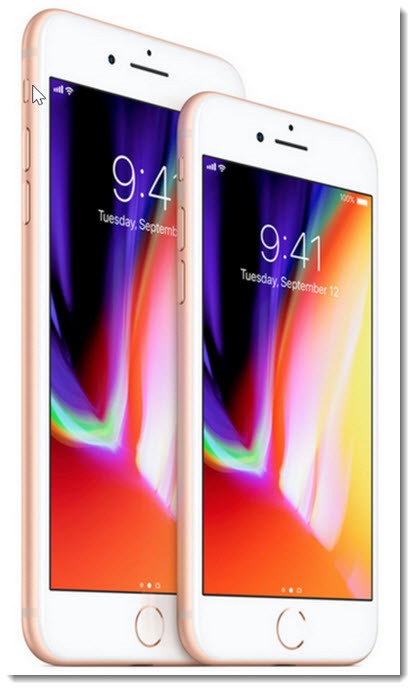
The Apple iPhone 8 and 8 Plus will be available on September 22. They are exactly what you would expect the next iteration of iPhones to be – slight improvements across the board compared to last year’s iPhone 7/7Plus, but nothing that is startling. In the past Apple might have named them the iPhone 7S and 7S Plus, reflecting the modest nature of the changes and upgrades.
There’s not much you need to know. The iPhone 8 & 8 Plus are nearly perfect, just like the last couple of iPhone models.
Some notable upgrades:
Wireless charging is a welcome addition, and Apple actually adopted an industry standard (“Qi,” pronounced “chi”), meaning third party charging plates will be readily available.
The back is glass. It looks great. Apple says it won’t be fragile and won’t scratch. No one believes that.
Apple claims that the camera is improved, thanks to better hardware and improved software processing. Obsessive camera aficionados thought the iPhone 7 & 7 Plus cameras were a small step back from the peak of the iPhone 6S cameras, so these will hopefully return Apple to the top of the pack.
The iPhone 8 & 8 Plus are ready for Apple’s augmented reality world, which might turn out to be a big deal. I’m skeptical that Apple will make AR compelling in the next couple of years – but somebody is going to get that ball rolling and I know better than to bet against Apple.
Apple finally increased the storage space on the base model to a reasonable 64Gb. Oddly, the only other option is a giant step to 256Gb, a bigger and more expensive jump that is more than most people need – but worth getting if you might need space since Apple in its wisdom isn’t giving us a 128Gb option.
The bad news is that Apple quietly increased the price over last year, adding fifty dollars across the board. The least expensive iPhone 8 is $699; the most expensive iPhone 8 Plus is an eye-watering $949. Almost no one sees that price, of course. It looks much more reasonable when it’s broken into monthly payments. Still – that’s a lot of money, eh?
The iPhone 8 & 8 Plus summary: Wonderful phones, but there’s very little reason for iPhone 7 users to upgrade. Got an earlier model or want to jump into the Apple world? Fine choices. Apple is also going to continue selling the iPhone 7/7 Plus as well as the iPhone 6S/6S Plus, at sliding prices. Those were pretty great phones, too, if you want to save some money.
Next: a quick look at the competition from Samsung and Google

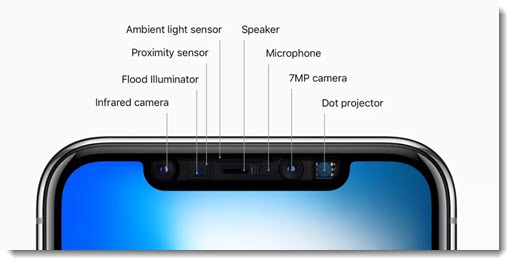
Wireless charging option in the new iphones sound promising